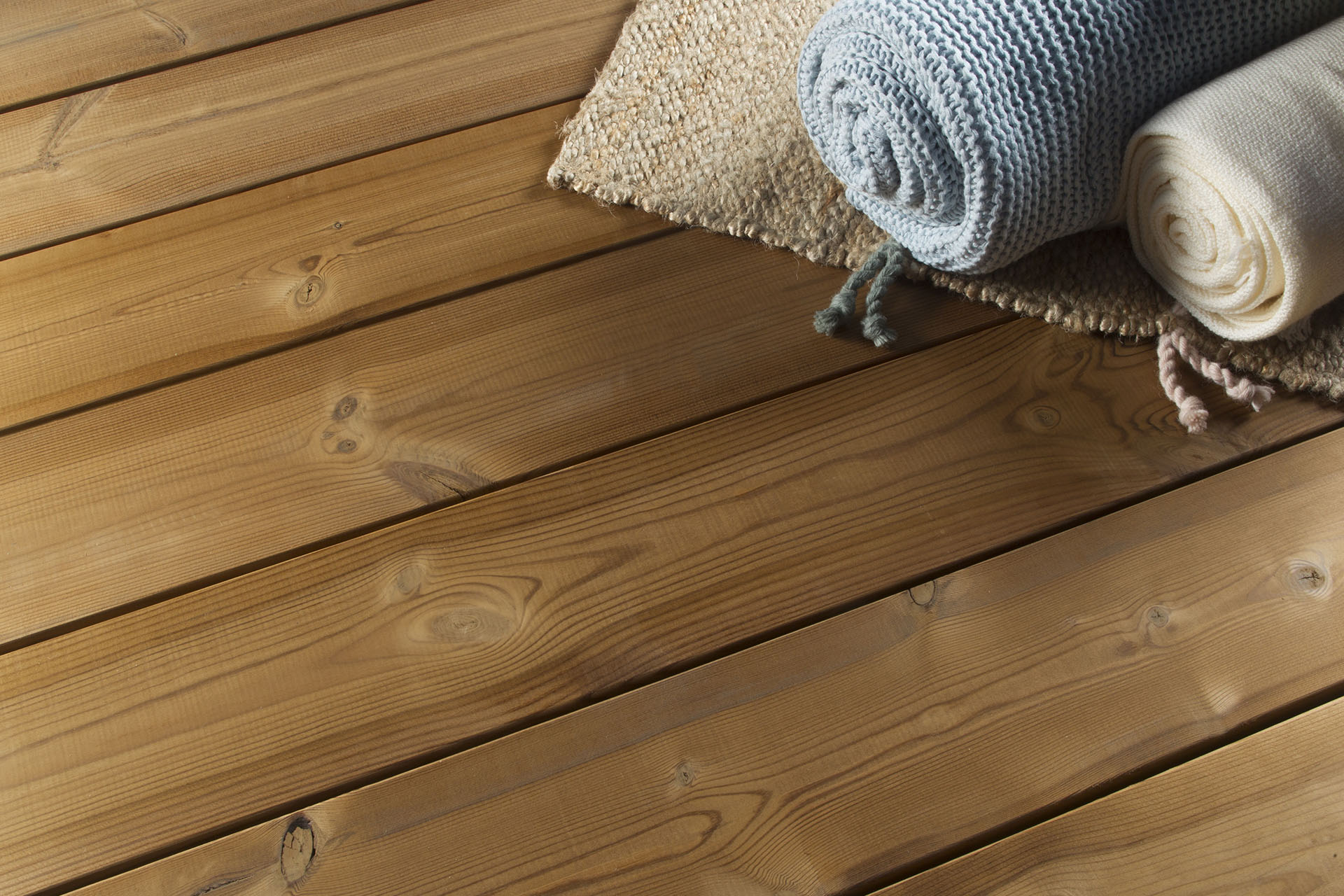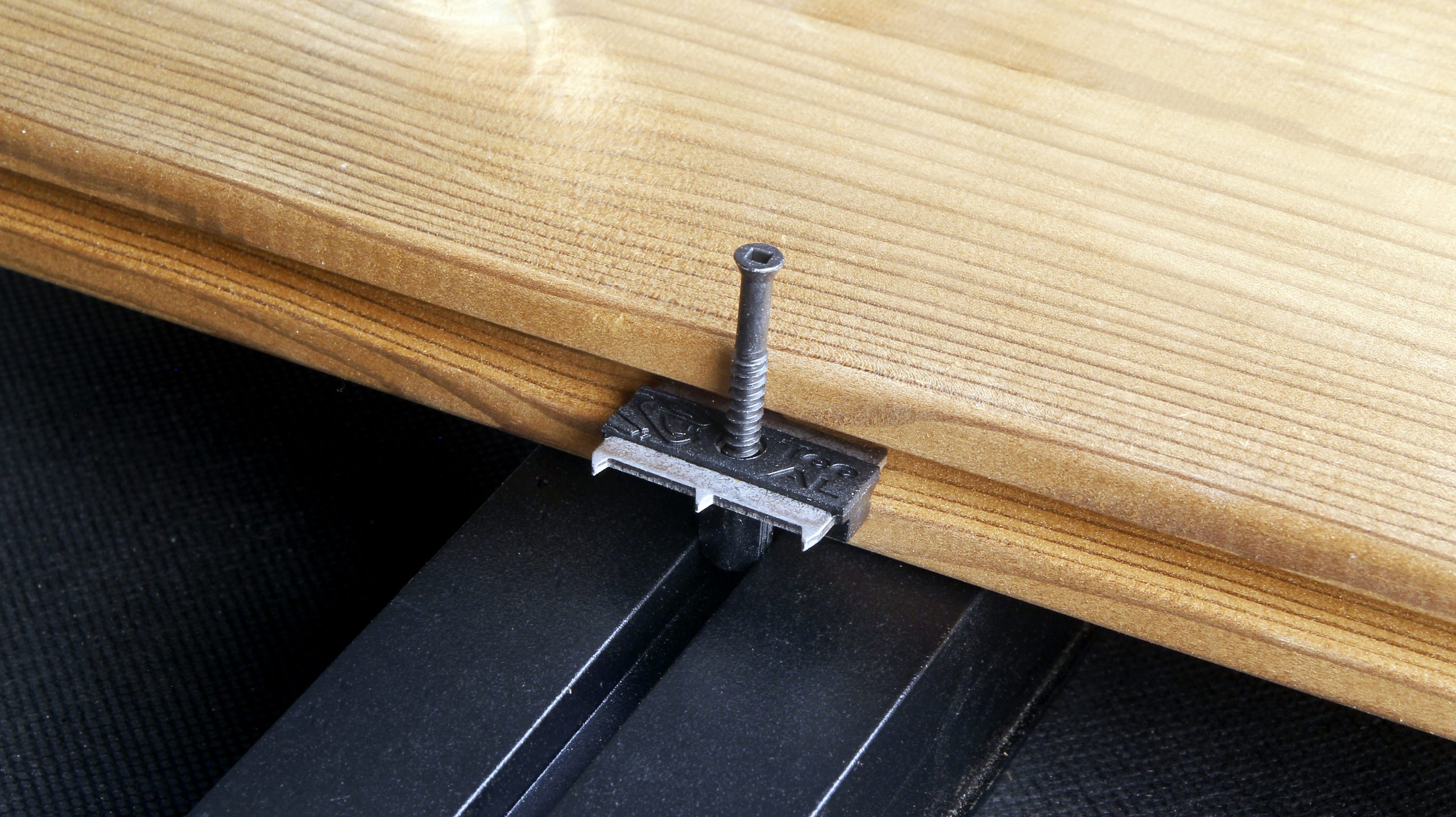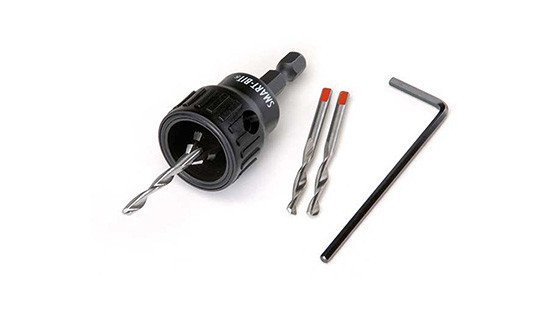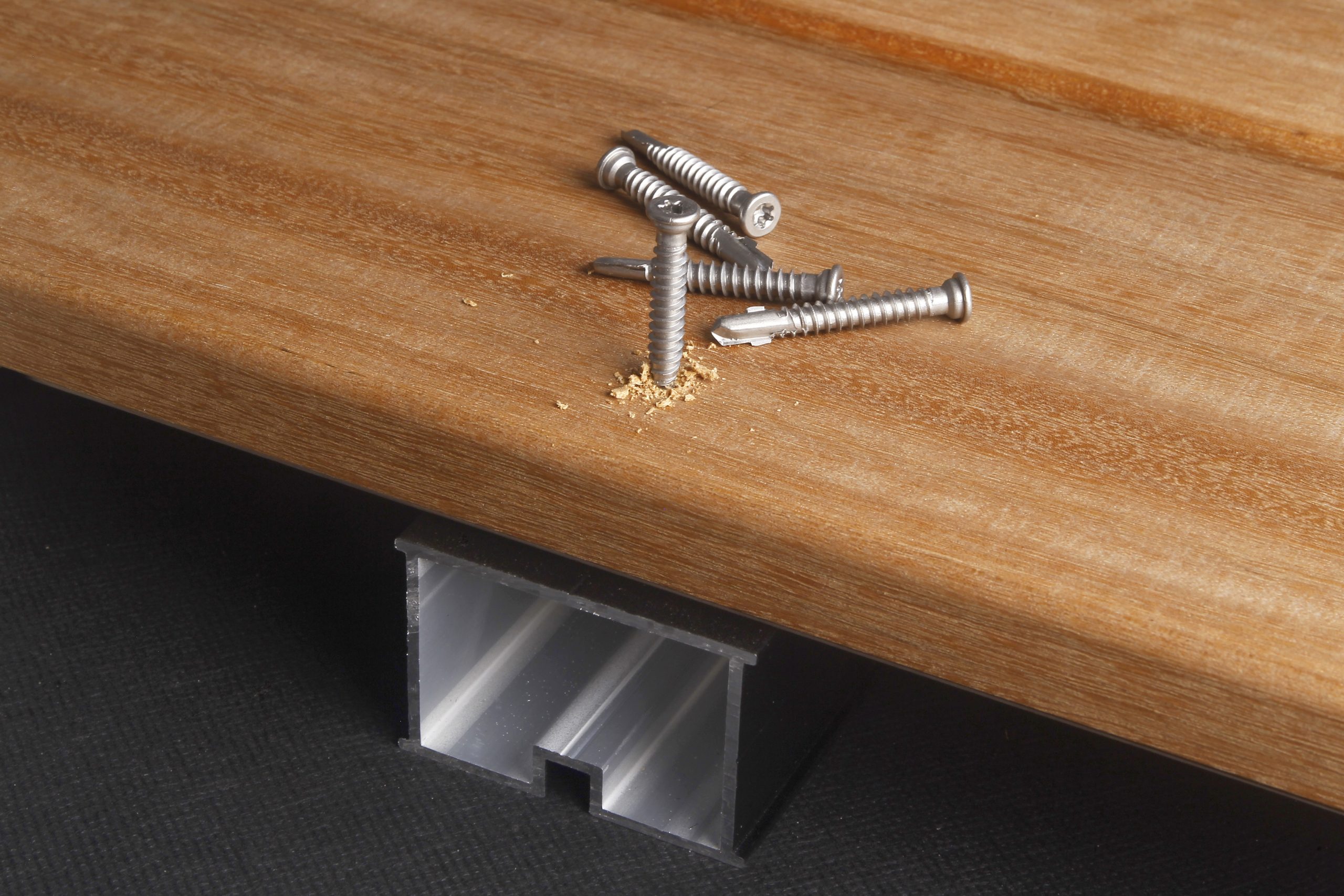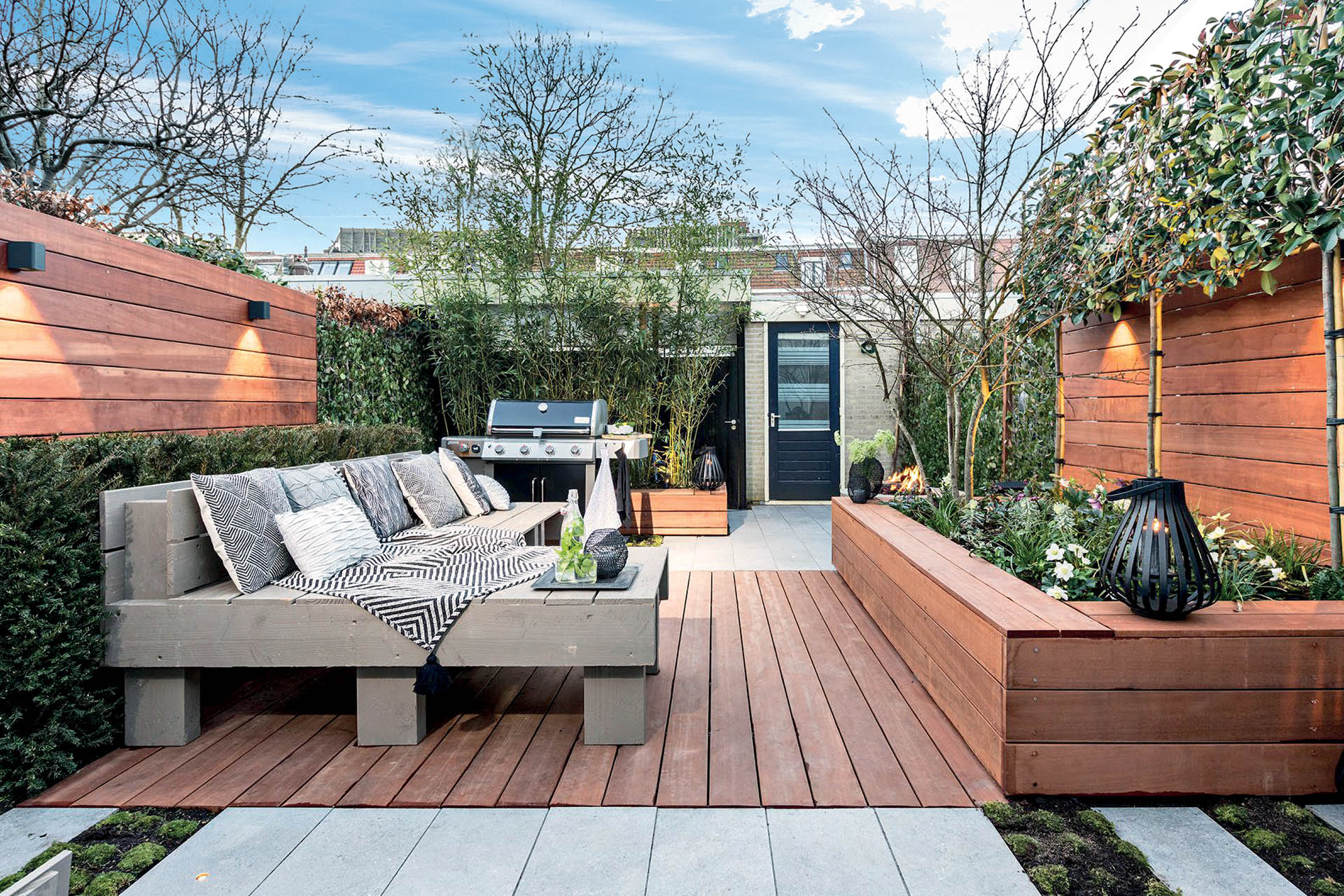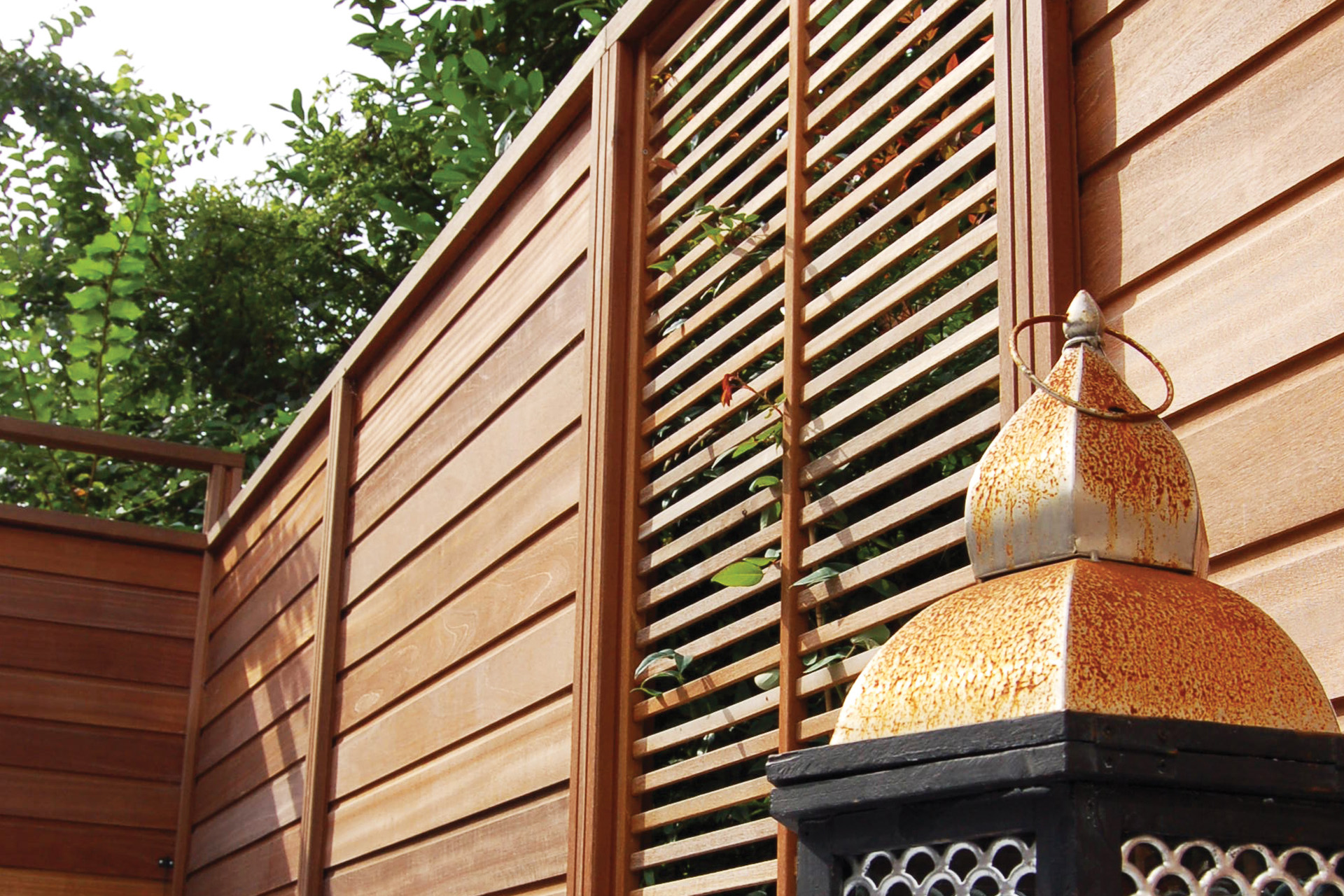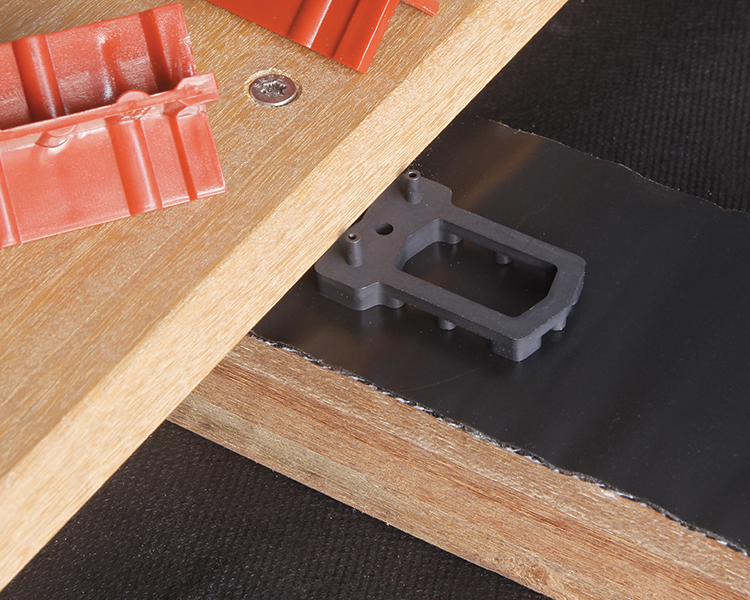- Home
- Deck Boards
- THERMOPINE decking
THERMOPINE decking
A caramel-coloured deck board
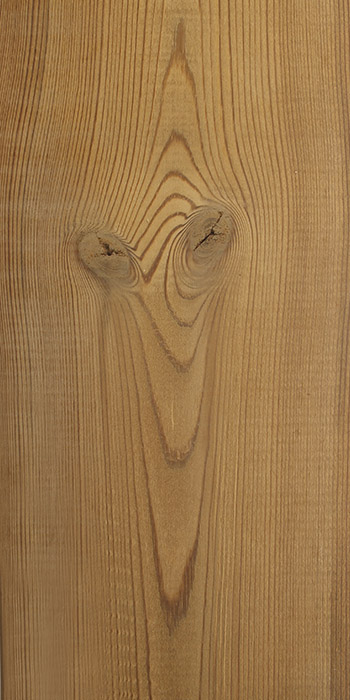
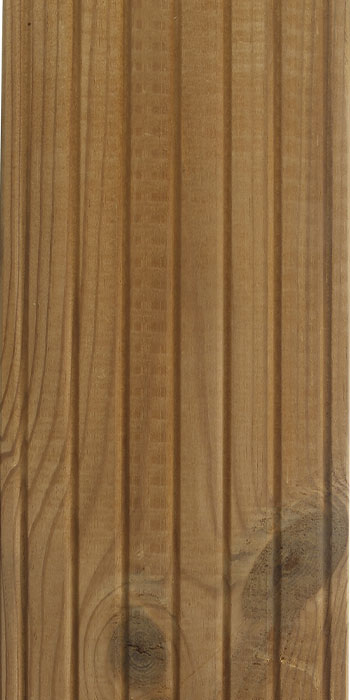
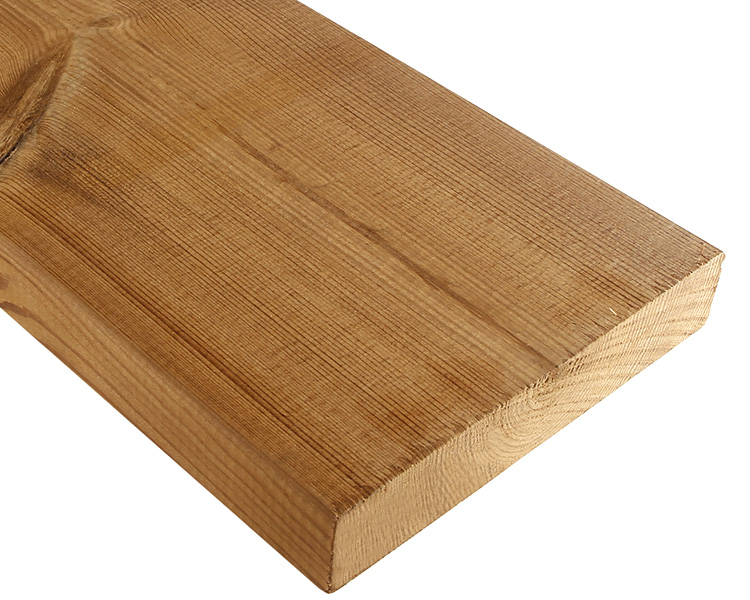
- Smooth board on both sides
- Caramel brown colour
- Light and stable
- Durable
- Hydrophobic wood
- Low thermal conductivity
A stable and durable pine board
Felixwood Thermopine boards are treated at a high temperature (200°C) using the Thermowood process, a controlled process that ensures a regular and homogenous quality for the thermo-heated wood.
The properties of Felixwood® Thermopine boards are exceptional compared to the same autoclave-treated natural wood.
Thermal treatment modifies Red Pine to make it much more stable, but above all, more durable without the use of any treatment product. The surface condition of the boards is remarkable and incredibly soft to the touch. The cuts are square at the end of the board.
Red pine comes from Scandinavia. The profiles offered are smooth and grooved. They can be either screwed or clipped with Cobra Hybrid clips.
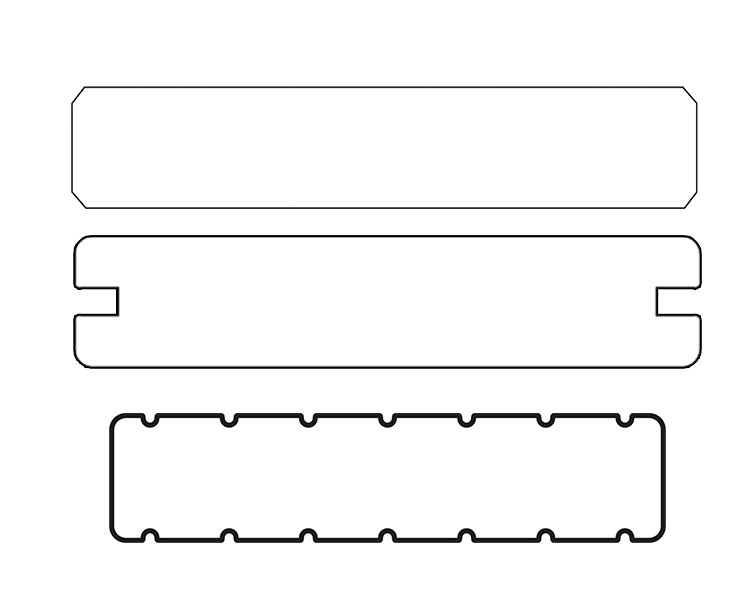
- Smooth : 26x139 mm
- Smooth - to clip : 26x139 mm
- Groove : 26x115 mm
Characteristics
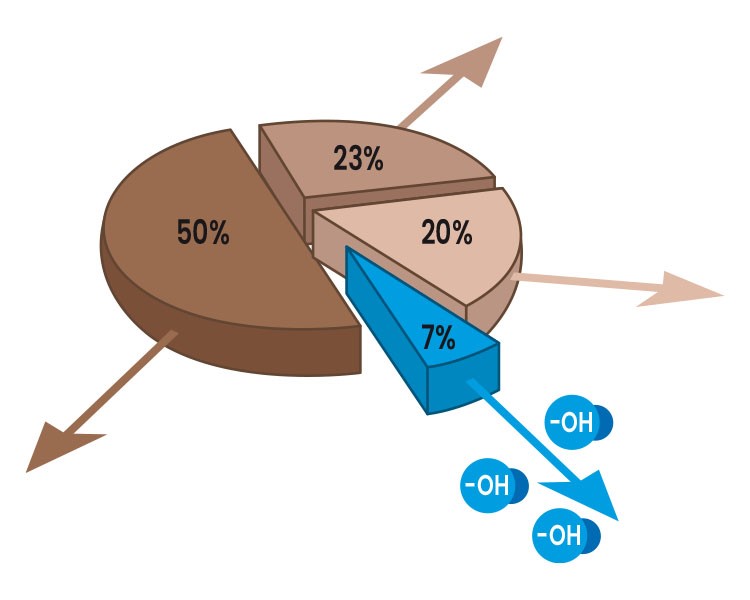
Felixwood Thermal Treatment
Scots pine is composed of cellulose, hemicellulose, lignin, and other substances such as water. In its natural state, it absorbs moisture from the air as it expands and, in dry weather conditions, it deforms itself in the opposite direction as it shrinks.
Thus, the wood in its natural state is not stable. This is what distinguishes it from other materials.
Properties of the wood can be changed through heat treatment. It becomes hydrophobic, i.e. insensitive to water. Its stability remarkably improves as the sugars have disappeared. It also gains in durability, as fungi and insects with wood-boring larvae are no longer interested in it.
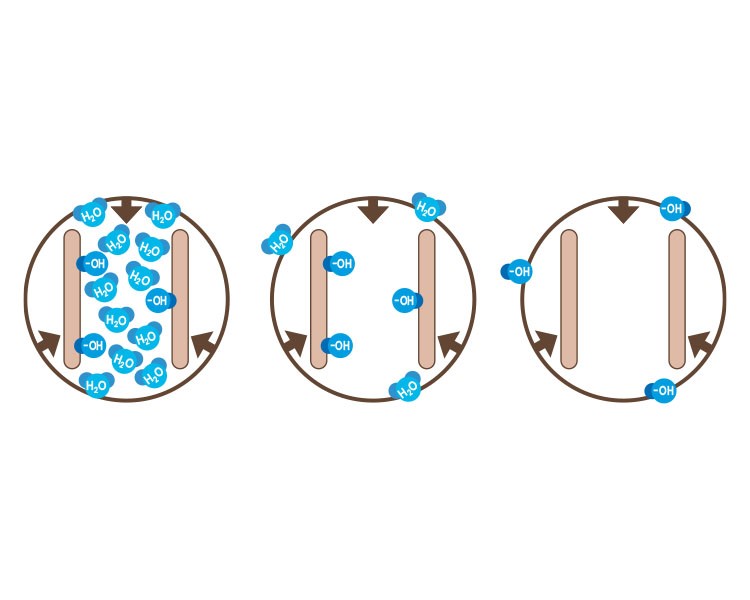
Thermal treatment: a 3-step process
The cycle lasts for 96 hours and is divided into three stages:
Step 1: Drying: the free water (H2O) contained in the wood is evaporated by a regular and moderate rise in temperature up to 140°C.
Step 2: the heat treatment: The temperature rises between 150°C and 210°C for more than 6 hours. Water, or more precisely the hydroxyl -OH groups are extracted from the cell wall. The heat treatment process is carried out at a minimum temperature of 180°C.
Stage 3: the cooling phase: the last stage. The wood is gradually cooled down and stabilised with water vapour to room temperature for about 18 hours.

An ecological process
Thermo-heated wood is chemical free. It is naturally rot-proof without any preservatives. Heat-treated wood from FelixWood is therefore not harmful to the environment nor health. It comes from renewable forests and is recyclable and sustainable.
This wood is also 30% more resistant to fire than ordinary wood.
Thanks to its low water absorption, Thermopine maintains its durability in all weather conditions. It lasts longer than ordinary wood. A low moisture content also prevents rot and fungi growth.
All FelixWood woods comply with the European Union Forest Law Enforcement, Governance and Trade Regulation (EU FLEGT). We scrupulously check the certificates of origin of the forest plots. All stages of production, from tree to shipment of the wood are traced and identified. We ensure continuous audit of all our suppliers in accordance with EU FLEGT. As such, 100% of our timber is of legal origin.
But beyond that, we are significantly increasing the proportion of our FSC-certified wood every year.
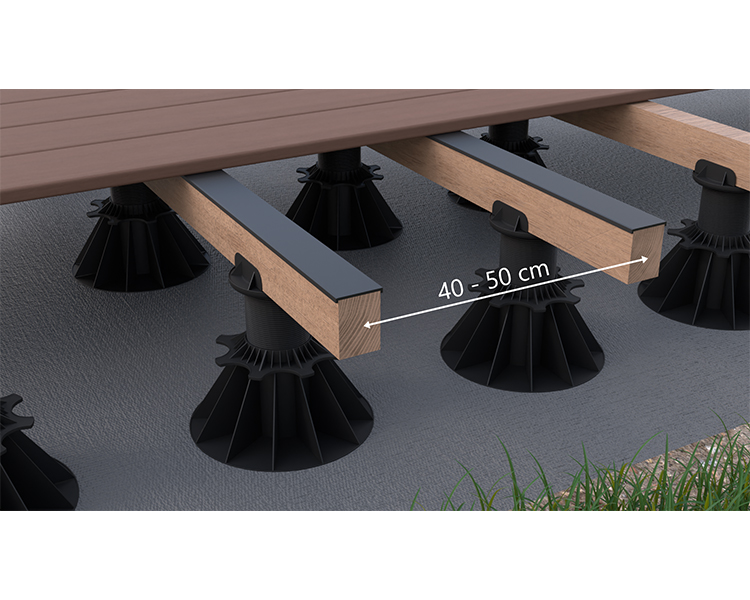
Installation of Thermopine boards
Les lames thermopin se fixent sur des lambourdes en respectant un entraxe maximum de 40 cm entre chaque lambourde.
Lors de la pose des lames de finition, les avant-trous sont obligatoires. Nous vous recommandons l'utilisation des outils de perçage/fraisage SMARTBIT (Smarbit pour vis 5 mm #10)
En effet le bois thermochauffé a la particularité d’être très sensible à la fente sous l’effet de la contrainte. Il faut éviter au maximum les zones de frottement avec des avant-trous.
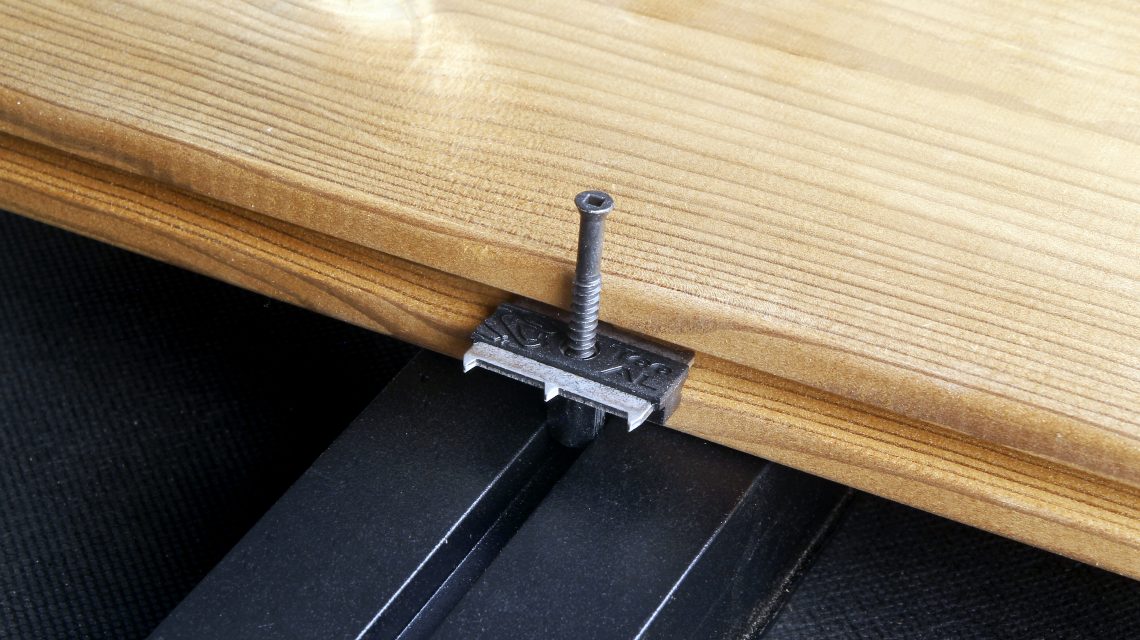
Clips Cobra Hybrid
THERMOPINE decking boards can be installed using Cobra Hybrid fastening clips. This system allows a quick and easy installation of your boards.
More details on the Cobra Hybrid clip page.
Fixing with these clips guarantees high stability and a good hold of the boards on the joists. This type of installation has the advantage of providing a neater finish, with invisible fastening.
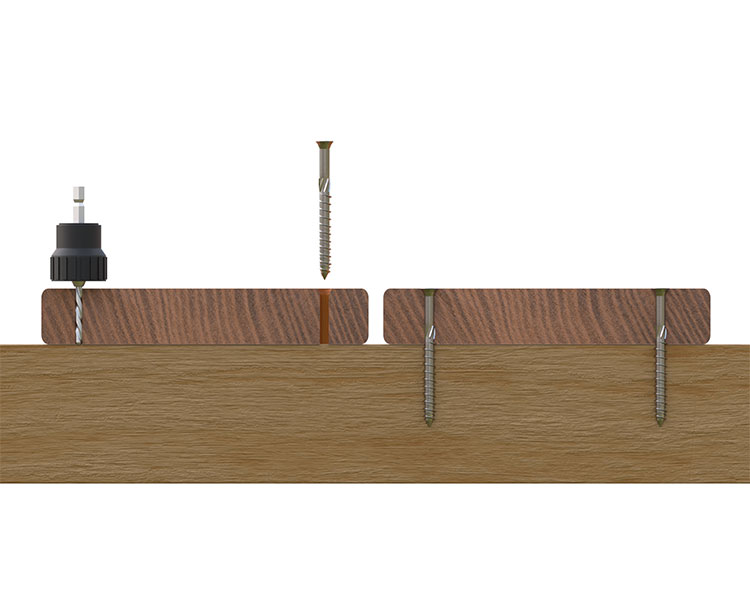
Fastening heat-treated boards by screwing them to the wooden joists.
2 stainless steel screws are required for each fastening point. The
recommended screw diameter depends upon the thickness of the board.
screw diameter = 5 mm
Length of the screw is about 2.5 times the length of the board. The board must be pre-drilled with a drill bit of the same diameter as the screw + countersink. The upper bare side of the countersunk screw must be slightly smaller than the upper side of the board (2mm).
The distance between edges of the board is 1.5 to 2 cm. Use the Cobraliner tool to help you comply with this rule and align your screws.
Always fasten the board edges less than 5 cm from the edge
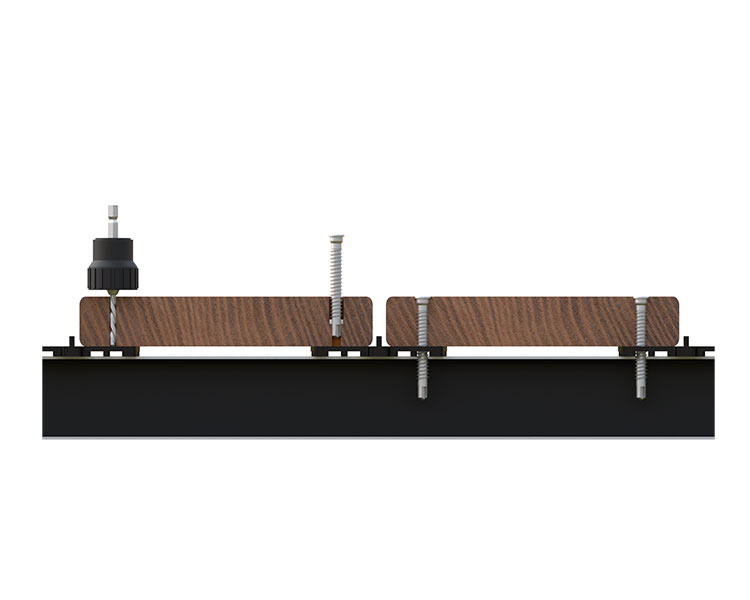
Fastening heat-treated boards by screwing them onto aluminium joists.
Two stainless steel screws are required per fixation point. Use metallic self-drilling screws. The board must be pre-drilled with the same drill bit diameter or even slightly larger than the screw diameter + countersink. The upper bare side of the countersunk screw must be slightly smaller than the upper side of the board (2mm).
The distance between the edges of the board is 1.5 to 2 cm. Always fix the ends of the boards less than 5 cm from the edge.
To limit noise pollution and reduce shearing effect on the screws due to aluminium expansion, we recommend applying a 5mm thick Shore 15 EPDM tape to the joists.
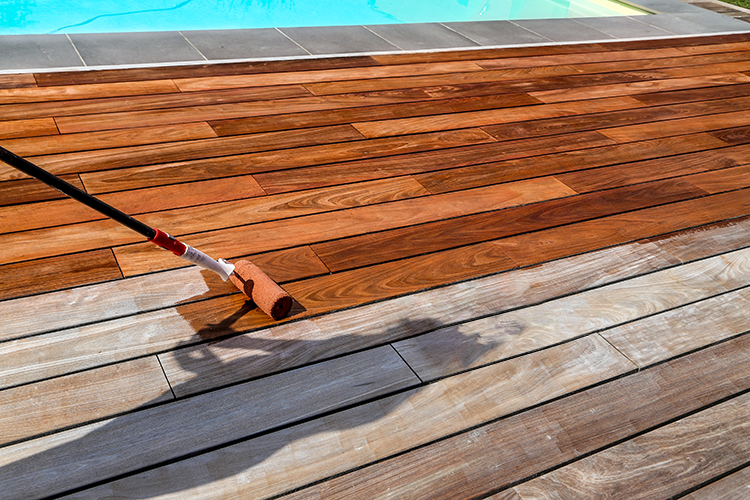
Maintenance of heat-treated boards
CAUTION: like most woods, thermopine reacts to contact with iron.
The appearance of black spots is the most common reaction. The blue-grey turning black, spike-shaped stains, spreading over larger areas of the wood are wrongly confused with mould.
This is a superficial reaction of the wood with oxidised iron (rust). Damage occurs quickly and suddenly, often at night (from dew or rain).
Remove metal shavings beforehand, avoid contact with lawn fertiliser and cement / plaster. If this has happened, see the information sheet on iron oxide / oxalic acid reaction.
